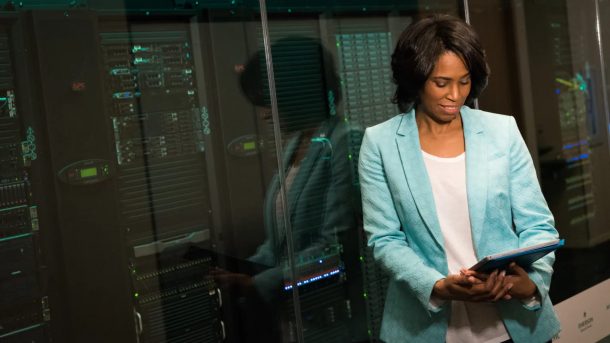While in-house cybersecurity teams work tirelessly to fortify their bank’s defenses, cyberattacks continue to escalate in sophistication and frequency. High-profile breaches and zero-day exploits serve as stark reminders that even the most robust security protocols can be vulnerable.
However, navigating this complex threat landscape doesn’t mean going it alone.
An increasingly popular strategy for enhancing cybersecurity measures without overextending resources is partnering with specialized third-party services.
Enter Managed Detection and Response (MDR), a solution that offers financial services companies the expertise and capabilities to augment their existing cybersecurity frameworks efficiently and effectively.
This article will take a look at the what, why, and how of MDR, illustrating how it can serve as a powerful ally to your bank’s in-house security operations, from bolstering detection capabilities to ensuring rapid response to threats.
Let’s dive in.
Managed Detection and Response (MDR) Defined
What is managed detection and response?
In short, MDR is an outsourced cybersecurity solution that blends human expertise with advanced analytics.
An end-to-end solution, MDR involves a team of cybersecurity experts that proactively monitors a bank’s networks, cloud environments, and user endpoints in a 24/7/365 capacity.
By moving beyond one-off solutions, MDR successfully integrates a broad spectrum of advanced tools—including artificial intelligence—to create robust protocols that exceed the oversight of most bank’s in-house IT teams.
These features offer a lifeline to banks with vulnerable security postures.
Is developing and maintaining banking cybersecurity for your firm too costly, time-consuming, and complex? MDR might be just what you need.
Why Should Banks Consider MDR?
While hackers have cybercrime-as-a-service, banks have MDR—i.e., security as a service.
This third-party rebuttal comes at the perfect time, as JPMorgan Chase recently admitted to fielding 45 billion hacking attempts per day—double the previous year.
There’s a good reason why Chase spends $15 billion a year on banking cybersecurity, employs over 60,000 specialists, and talks about it publicly: they want to put their customers at ease.
Unfortunately, deep pockets and in-house teams alone won’t defeat hackers—as recent major breaches have made abundantly clear.
As we will see, banks must invest in both their internal and external security infrastructure to wage an effective war against the cybercriminal class.
MDR enables banks to defend themselves effectively, even with today’s ever-evolving threat environment.
While also prioritizing employee training, banks should consider leveraging managed detection and response to unlock the following benefits:
1. Real-Time Threat Detection
With real-time threat detection, MDR offers around-the-clock monitoring for a bank’s networks, systems, and endpoints.
By combining human expertise with advanced algorithms, MDR can provide 24/7 anomaly detection that eliminates potential threats and quarantines active ones.
In other words, MDR can help your bank shut down cyberattacks in their infancy.
2. Rapid Response
Though it takes the average firm 277 days to identify and contain a breach, MDR enables a truly immediate threat response.
After all, your MDR provider will have the ability to contain and remediate threats on your behalf as soon as they arise.
Thanks to such rapid response, your bank can avoid downtime, financial losses, and irreparable reputational damage.
3. State-of-the-Art Technology
While the banking cybersecurity market is surging, the breadth of product offerings can make it difficult for banks to build a unified protocol on their own.
Plus, many cybersecurity solutions are cost-prohibitive, especially when purchased à la carte.
However, thanks to MDR, you can gain access to cutting-edge technology—and a team of elite security professionals—bundled into one high-value (and affordable) package.
4. Streamlined Compliance
Many MDR providers are experts in navigating the cybersecurity regulatory landscape.
While maintaining compliance with established regulations, managed detection and response services can ensure your bank maintains alignment with new and emerging standards.
In some cases, MDR organizations can even help you streamline your bank’s compliance reporting and audits.
5. Customization and Flexibility
While MDR solutions unify diverse protocols, that doesn’t mean they’re one-size-fits-all strategies.
Far from it.
In fact, most MDR providers provide customizable solutions tailored to your bank’s individual needs and risk profile.
Better yet, these tools are adaptable—not fixed. Therefore, if you ever need to adjust your response levels or prioritize specific threats, your MDR team can easily adapt.
After all, they’re available 24 hours a day, 7 days a week.
How Managed Detection and Response Works
Managed detection and response is a broad (and competitive) industry.
Should you decide to pursue an MDR provider, you will have many reputable vendors to consider.
While no two MDR companies are the same, they will generally include the following elements in their security framework:
Collection
This is where analysts gather comprehensive data from across a bank’s IT ecosystem, to understand how (in)secure it is, and where the potential entry points are.
This “30,000-foot” view often includes firewalls, networks, email accounts, cloud environments, user endpoints, and other potential vulnerabilities.
Prioritization
At this stage, MDRs actively distinguish false positives from authentic threats. Analysts carefully organize these alerts according to their perceived threat levels.
This rigorous approach helps financial institutions avoid the decision fatigue that often plagues in-house IT teams.
Hunting
Banking cybersecurity experts pursue the known tactics, techniques, and procedures (TTPs) of hackers.
While AI algorithms can triage threats, it often takes a trained human being to catch stealthy attack methods before it’s too late.
For example, hunting is essential to identify lookalike domains registered to impersonate established banks.
Because this mode of surveillance preempts “long-game” social engineering attacks, it
requires human beings at the helm—the kinds of experts employed by MDR organizations.
Investigation
Here, analysts determine the severity of a live threat, incident, or breach.
During an investigation, MDR specialists quickly determine three criteria: what happened, who was harmed, and how much damage the attackers caused.
Though other questions are relevant, they will be addressed after the threat is eliminated.
Analysts then use their findings to plan a swift response, prevent secondary attacks, and update the security infrastructure.
Response
MDR experts quarantine and eradicate an intruder.
While in-house IT teams can take weeks (and even months) to contain a threat, MDR providers are able to secure a network with tremendous efficiency—sometimes in a matter of minutes.
Depending on the contract, MDR providers will either eliminate the threat on their own, or they will offer the client step-by-step instructions to complete the process.
This is often referred to as a guided response, which may involve recommendations like pausing suspicious processes or quarantining compromised devices.
Remediation
MDR teams conduct a root cause analysis of the prior threat.
Throughout a guided remediation, analysts actively ensure that all bank networks and endpoints are totally free of intruders, malware, and other potential vulnerabilities.
During this step, MDR providers may advise updating software, patching systems, or changing user permissions on an account.
In the aftermath of a cyberattack, MDR providers won’t merely return a bank’s infrastructure to its “normal” status. Instead, they will ensure that the firm’s entire security posture is improved to prevent any possibility of recurrence.
Managed Detection Response FAQs
MDR can inspire as many questions as answers.
Here are a few quick FAQs to help connect the dots:
1. Does MDR replace the need for an in-house cybersecurity team?
Probably not, although the answer will depend on the size and capabilities of your firm.
If you are a smaller bank, a robust MDR provider might be able to replace your in-house staff.
However, most mid-size and large enterprises should view MDR as a supplement to their existing protocols, not a wholesale replacement.
2. What’s the difference between MDR and SIEM?
While MDR is a human-led service, security information and event management (SIEM) is a technology that collects data from security tools.
For example, SIEM uses software to monitor known threats. Conversely, MDR uses human expertise to detect unknown threats.
To put it another way, SIEM takes a passive approach to security management, while MDR enables full-scale threat hunting and detection.
3. How are EDR and MDR different?
Endpoint detection and response (EDR) has one primary focus: securing endpoints
(i.e., the devices that connect to a network).
Though EDRs can be useful, an MDR protocol offers more comprehensive solutions that strengthen the entirety of an organization’s IT ecosystem (including the network, systems, and cloud environment).
Do note that some MDR providers include EDR solutions within their product suite.
4. What is the role of artificial intelligence (AI) in MDR?
While MDR services deliver human oversight, they also leverage the latest machine learning algorithms to process vast quantities of data.
Thanks to these advanced technologies, MDR providers are able to instantly detect anomalies, identify strange patterns, and respond to sophisticated attacks that most traditional security measures might overlook.
As we discussed in our AI and cybersecurity overview, investments in artificial intelligence can offer a significant ROI for banks.
5. How quickly can MDR services respond to a threat?
Most MDR services offer 24/7 surveillance.
While response times vary (depending on the severity of the breach), most MDR providers can notify banks within minutes of a detection.
Considering the average organization takes 207 days to identify a breach, MDRs are positioned to provide a truly indispensable service.
.Bank: Defending Your Good Name
Why are managed detection and response providers so essential?
Because they hunt hackers, stop cyberattacks, and protect data. They’re proactive in a time when far too many firms are paralyzed with fear.
Best of all, many MDR providers prioritize user education throughout each step of the process—directly and indirectly.
As experts in the field, they are uniquely qualified to share their knowledge, perspectives, and resources for your team to utilize.
At .Bank, we proudly partner with Zabbix to monitor .Bank domains for common web and email security vulnerabilities, to ensure compliance with the .Bank Security Requirements.
When there’s a finding, .Bank clients are notified, and the .Bank team will help educate the bank on how to rectify the issue.
In fact, we provide this service at no cost to clients—because we want .Bankers to enjoy the very best .Bank security can offer.
After all, it’s part of our founding pledge: to build a worldwide community committed to making the internet a safer place for banking.
Contact us and learn more about how a .Bank domain can better protect your organization.



